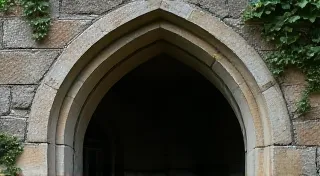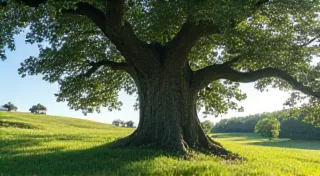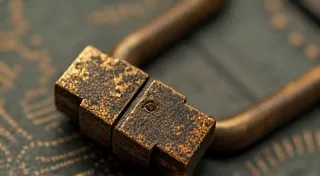The Art of Lock Picking: A Beginner's Guide
Delve into the fascinating world of lock picking – a pursuit of skill, observation, and understanding. This guide explores the fundamentals for recreational purposes and educational value, always emphasizing ethical considerations.
Beyond the Key: An Introduction to the Art of Lock Picking
The satisfying click of a lock disengaging isn’t just a sound; it's a moment of problem-solving, a testament to focused attention, and a window into a deeper understanding of mechanical systems. Welcome to the captivating world of lock picking. It’s more than just a hobby; it's a craft that sharpens your observational skills, demands meticulous technique, and fosters a profound appreciation for the interplay of ingenuity and vulnerability. This website serves as your entry point – a comprehensive resource for aspiring lock pickers, prioritizing safe practices, ethical considerations, and a genuine love for the mechanics at play. Forget brute force; we're exploring the elegance of finesse.
For many, the idea of security evokes images of imposing vaults and high-tech surveillance. But at its core, security is a complex system of layered defenses, each with its own set of weaknesses. Understanding these vulnerabilities isn’t about compromising safety; it’s about appreciating the fragility of systems we often take for granted. It’s about becoming a more informed participant in the ongoing conversation about how we protect ourselves and our belongings.
This journey begins with a foundational understanding of the tools and principles involved. While the allure of bypassing locks can be intriguing, we strongly advocate for responsible and ethical practice. We're not encouraging illegal activity; we're championing a skill that promotes awareness, encourages creativity, and illuminates the often-overlooked complexities of physical security. Consider it a deep dive into a captivating intellectual challenge – a pursuit reflected in titles like "The Cipher of Trust: How Vulnerability Shapes Security" (/cipher-of-trust) and "The Ciphered Heart: How Vulnerability Reveals Strength in Security" (/ciphered-heart-security).
Why Explore the Art of Lock Picking?
Beyond the practical applications (and we'll emphasize that this is for educational and recreational purposes!), lock picking offers a wealth of benefits. It’s a fantastic DIY project that stimulates critical thinking and problem-solving, paralleling themes explored in "The Clockwork Labyrinth: DIY Security as Creative Problem-Solving" (/clockwork-labyrinth-diy). The act of deciphering a lock’s intricacies demands focused attention and patience, qualities that translate well to other areas of life. There’s a certain poetry to the process, a subtle dance of precision and intuition – an essence captured in "Echoes in the Tumblers: The Poetry of Precision" (/echoes-in-the-tumblers"). It'll also improve your understanding of "The Labyrinthine Logic: Unraveling Security's Paradoxes" (/labyrinthine-logic).
Moreover, the study of security isn’t confined to physical locks. It extends to digital systems, social interactions, and even personal relationships. By understanding the principles behind physical security – how locks are designed, how they fail, and what makes them vulnerable – you gain a broader perspective on the nature of trust, vulnerability, and the delicate balance between freedom and constraint. The observation involved echoes themes discussed in "Echoes of the Vault: The Legacy of Observance in Unlocking Potential" (/echoes-vault-observance).
The process isn’t just about picking a lock; it’s about appreciating the ingenuity of the designer and the creativity of the bypasser, understanding "The Geometry of Interference: Disruption as Discovery" (/geometry-of-interference).
Your Toolkit & Essential Knowledge: A Step-by-Step Tutorial
Embarking on your lock picking journey requires the right tools and a solid foundation of knowledge. Our guide, "Essential Lock Picking Tools: A Beginner's Toolkit & Safety Guide" (/essential-lock-picking-tools), provides a comprehensive overview of the essential implements, covering everything from basic picks to specialized security tools, and crucially, the safety precautions you should always prioritize. We've included a visual tutorial within that guide to walk you through the basic tool usage.
Before you even touch a pick, familiarize yourself with the types of locks you're likely to encounter. "Understanding Lock Types: A Beginner's Guide to Pin Tumbler Locks" (/understanding-pin-tumbler-locks) provides a detailed explanation of pin tumbler locks – the most common type you’re likely to encounter – and the underlying principles that govern their operation. Follow along with our accompanying video tutorial for a deeper understanding.
Central to the entire process is understanding the shear line – that critical point where the pins align, allowing the cylinder to rotate. "The Shear Line Explained: Your First Step to Successfully Picking a Lock" (/understanding-the-shear-line) provides a comprehensive guide to identifying and utilizing this key concept. We're adding a hands-on tutorial soon to make this even easier to grasp.
Beyond the Basics: Exploring the Philosophy and Art of Security
The world of lock picking extends far beyond the simple act of manipulating pins. It’s a window into a complex web of concepts, philosophies, and artistic expressions. Consider titles like "A Palimpsest of Security: Layers of Defenses & Their Histories" (/palimpsest-of-security) and "The Cartographer of Absence: Mapping Security Vulnerabilities and the Writer’s Instinct" (/the-cartographer-of-absence).
Delving further, explore the artistry and technique encapsulated in "Instruments of Inquiry: The Artisan’s Tools of Access" (/instruments-of-inquiry) and experience the resonance captured in "Resonance and Release: The Art of Delicate Persuasion" (/resonance-and-release).
Remember to consider the broader implications, including the philosophical perspective articulated in "The Shadow of Assumption: Why Security’s Greatest Flaw is Belief" (/shadow-of-assumption) and the ethical guidelines outlined in "Silent Consent: Ethics and the Privilege of Circumvention" (/silent-consent).
Finally, connect the craft of lockpicking with the art of writing via "The Cipher in the Turn: How Lock Picking Mirrors the Writer's Journey" (/the-cipher-in-the-turn) and the insightful perspective offered in "The Whispers of Compromise: Lock Picking & the Fragility of Perception" (/the-whispers-of-compromise).
Remember to consider the broader implications, including the philosophical perspective articulated in "The Shadow of Assumption: Why Security’s Greatest Flaw is Belief" (/shadow-of-assumption) and the ethical guidelines outlined in "Silent Consent: Ethics and the Privilege of Circumvention" (/silent-consent).
For a further exploration, consider "The Cartographer of Closure: Mapping the Boundaries of Access" (/cartographer-of-closure).
Remember to consider the broader implications, including the philosophical perspective articulated in "The Shadow of Assumption: Why Security’s Greatest Flaw is Belief" (/shadow-of-assumption) and the ethical guidelines outlined in "Silent Consent: Ethics and the Privilege of Circumvention" (/silent-consent).
Remember to consider the broader implications, including the philosophical perspective articulated in "The Shadow of Assumption: Why Security’s Greatest Flaw is Belief" (/shadow-of-assumption) and the ethical guidelines outlined in "Silent Consent: Ethics and the Privilege of Circumvention" (/silent-consent).
Remember to consider the broader implications, including the philosophical perspective articulated in "The Shadow of Assumption: Why Security’s Greatest Flaw is Belief" (/shadow-of-assumption) and the ethical guidelines outlined in "Silent Consent: Ethics and the Privilege of Circumvention" (/silent-consent).
Remember to consider the broader implications, including the philosophical perspective articulated in "The Shadow of Assumption: Why Security’s Greatest Flaw is Belief" (/shadow-of-assumption) and the ethical guidelines outlined in "Silent Consent: Ethics and the Privilege of Circumvention" (/silent-consent).
Remember to consider the broader implications, including the philosophical perspective articulated in "The Shadow of Assumption: Why Security’s Greatest Flaw is Belief" (/shadow-of-assumption) and the ethical guidelines outlined in "Silent Consent: Ethics and the Privilege of Circumvention" (/silent-consent).
Remember to consider the broader implications, including the philosophical perspective articulated in "The Shadow of Assumption: Why Security’s Greatest Flaw is Belief" (/shadow-of-assumption) and the ethical guidelines outlined in "Silent Consent: Ethics and the Privilege of Circumvention" (/silent-consent).
Remember to consider the broader implications, including the philosophical perspective articulated in "The Shadow of Assumption: Why Security’s Greatest Flaw is Belief" (/shadow-of-assumption) and the ethical guidelines outlined in "Silent Consent: Ethics and the Privilege of Circumvention" (/silent-consent).
Remember to consider the broader implications, including the philosophical perspective articulated in "The Shadow of Assumption: Why Security’s Greatest Flaw is Belief" (/shadow-of-assumption) and the ethical guidelines outlined in "Silent Consent: Ethics and the Privilege of Circumvention" (/silent-consent).
Remember to consider the broader implications, including the philosophical perspective articulated in "The Shadow of Assumption: Why Security’s Greatest Flaw is Belief" (/shadow-of-assumption) and the ethical guidelines outlined in "Silent Consent: Ethics and the Privilege of Circumvention" (/silent-consent).
Remember to consider the broader implications, including the philosophical perspective articulated in "The Shadow of Assumption: Why Security’s Greatest Flaw is Belief" (/shadow-of-assumption) and the ethical guidelines outlined in "Silent Consent: Ethics and the Privilege of Circumvention" (/silent-consent).


















